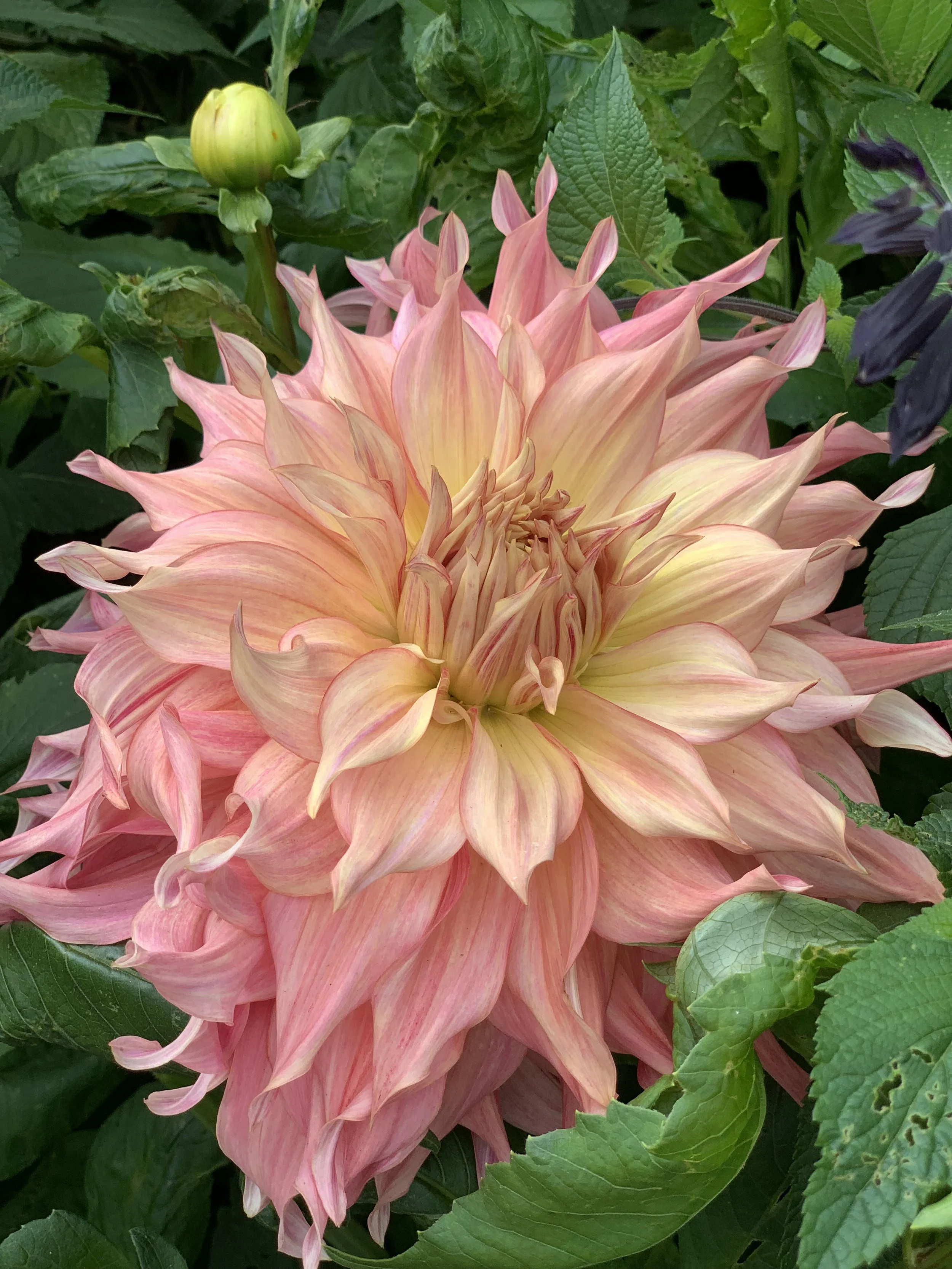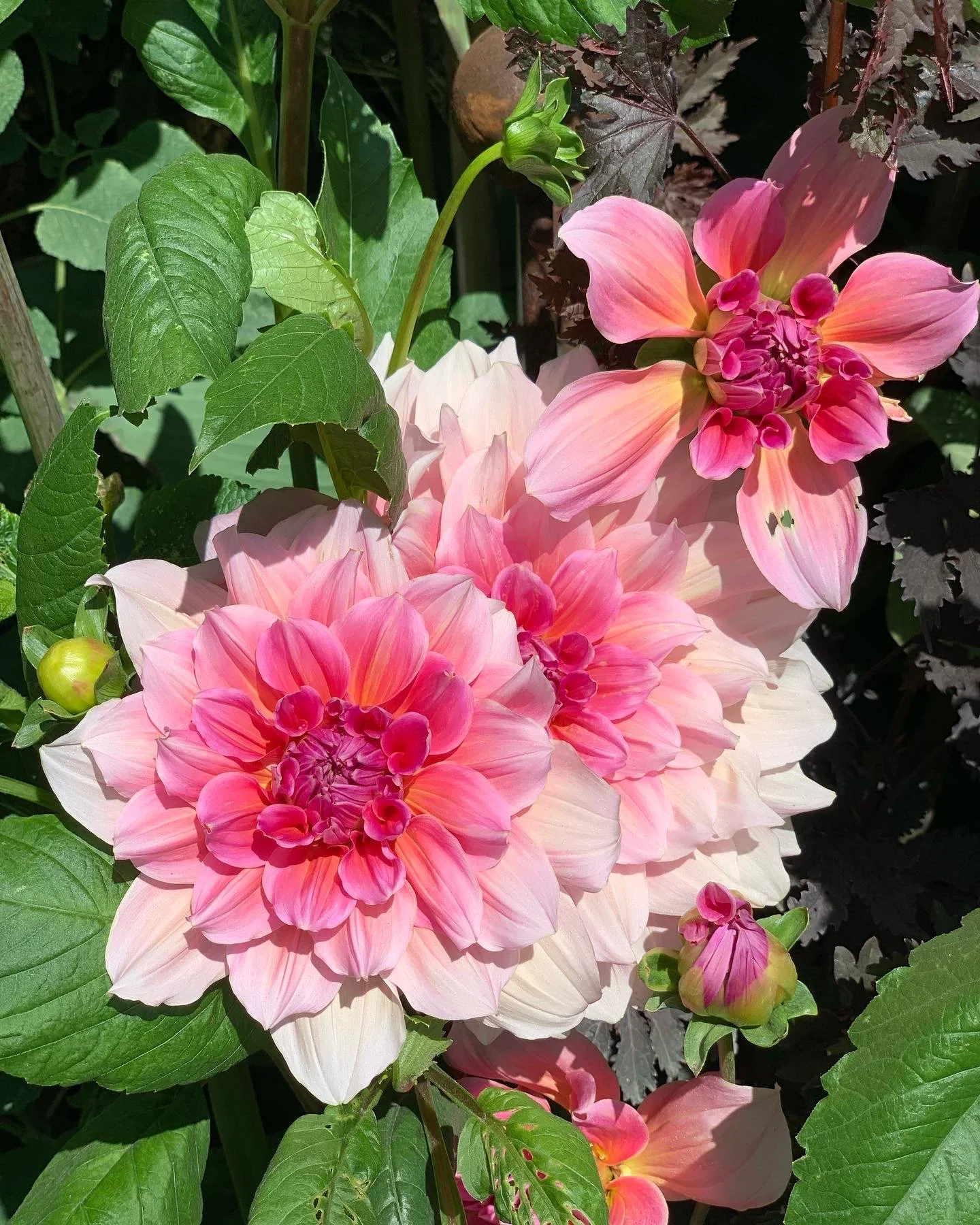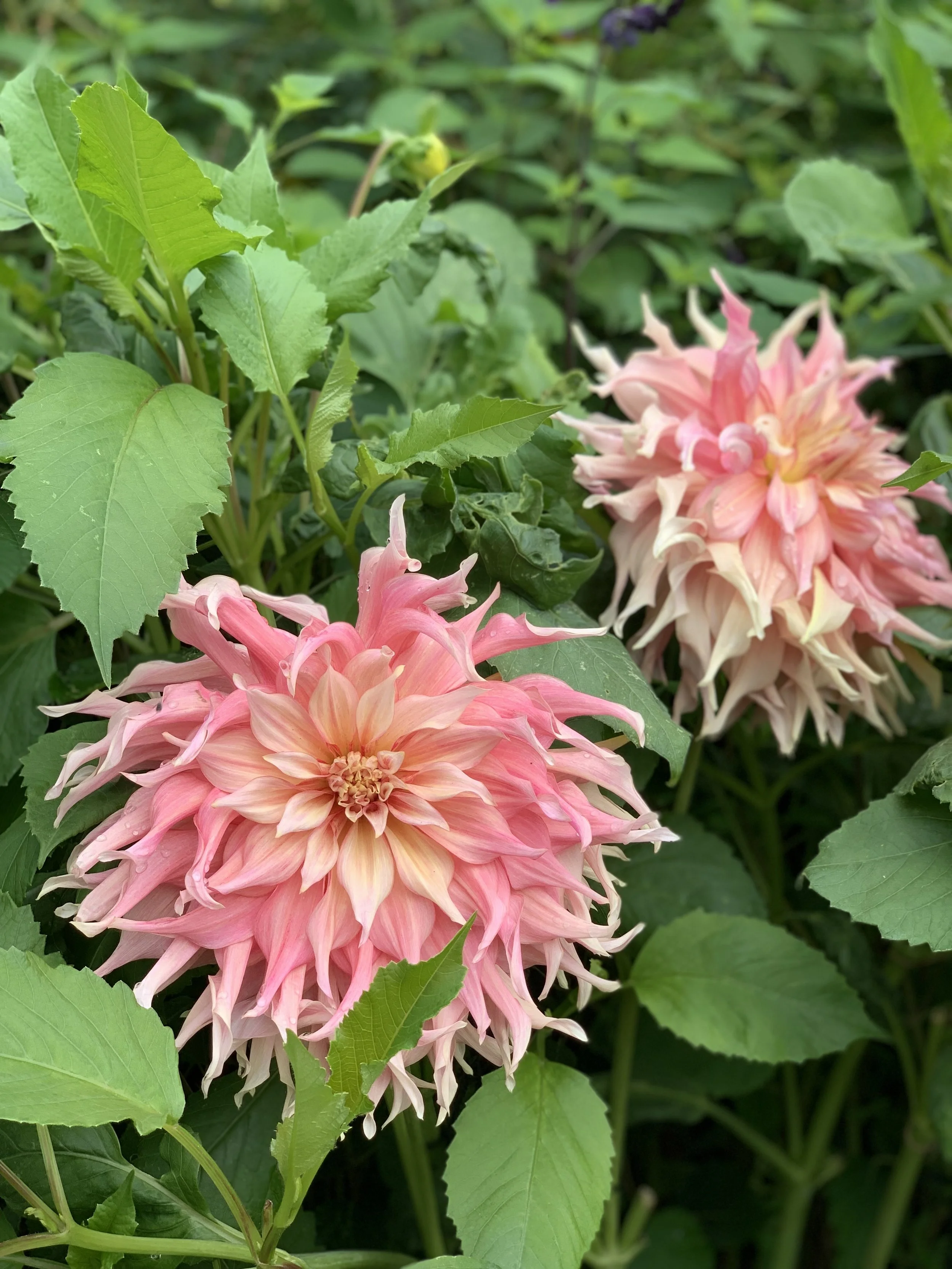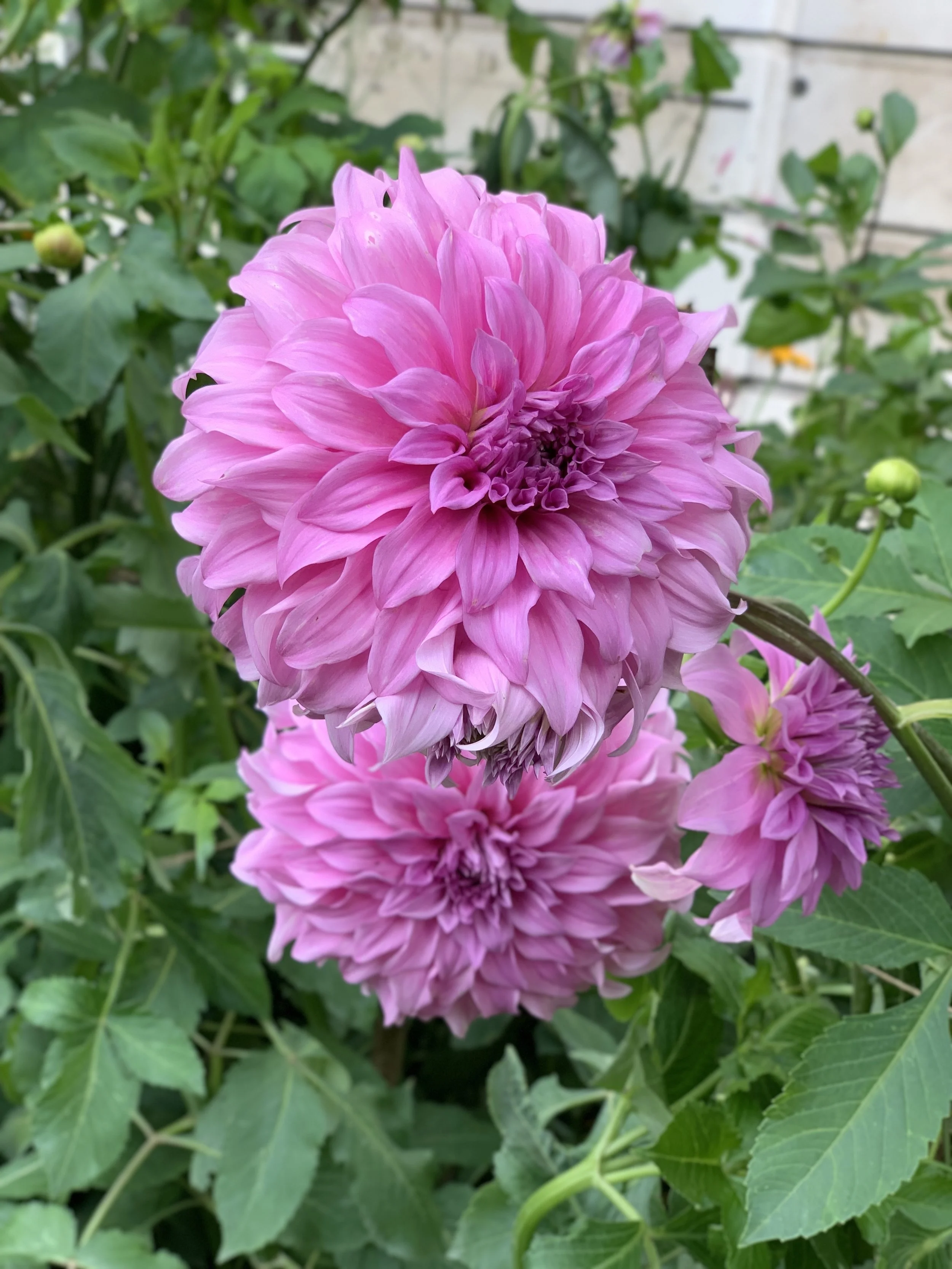Planting Dahlia Tubers: A Comprehensive Guide
This article has links to products that I may make commission from.
Dahlias, with their myriad colors, intricate petal arrangements, and bold presence, are often considered the crown jewels of the garden.
Originating from the mountain regions of Mexico, these flowers captivate due to their undeniable charm.
Beyond their aesthetic appeal, dahlias have a rich history and significance.
These perennial flowers have been cultivated for their tubers, which were historically a food source for indigenous peoples.
Today, their primary allure lies in their blooms, which range from dainty pompons to dinner plate-sized spectacles.
Choosing to plant dahlia tubers in your garden is akin to adding a piece of living art.
The act of planting and nurturing dahlias promises a journey filled with beautiful color, intricate growth patterns, and the undeniable satisfaction of watching a garden come to life.
In this guide I will take you through the intricacies of growing dahlias, from selecting the right tubers to ensuring their full bloom.
To learn more about growing dahlias, check out my guides:
Understanding Dahlia Tubers
Dahlia tubers are fascinating structures, and to truly appreciate the beauty of the flowers they produce, it is interesting to understand the tubers themselves.
What Are Dahlia Tubers?
At a glance, dahlia tubers may seem like any other plant root.
However, they are specialized storage organs that hold nutrients and energy for the dahlia plant.
Unlike tulip bulbs, which have a more spherical shape and layered appearance (think of an onion), tubers are elongated and often resemble a bunch of clustered fingers.
Each tuber has the potential to sprout a new dahlia plant..
The Lifeline of Dahlia Flowers
Dahlia tubers are essentially the lifeline of the dahlia plant.
They store the necessary energy and nutrients during the dormant period (winter) and ensure the dahlia has a strong start once the growing season begins.
When conditions are right, the "eyes" or growth points on the tuber will sprout, giving rise to stems, leaves, and eventually, the coveted dahlia blooms.
Diversity in Dahlia Tubers
Dahlias are celebrated for their incredible diversity, with thousands of varieties ranging in color, size, and shape.
This diversity extends to their tubers too.
While most tubers share a general appearance, there are subtle variations in size and shape, often influenced by the specific dahlia variety and growing conditions.
Preservation and Propagation
One of the benefits of dahlia tubers is their ability to be preserved and propagated.
You can divide mature tubers to multiply their dahlia collection or share with fellow gardening enthusiasts.
Additionally, with proper care, tubers can be stored over winter and replanted the following season, ensuring the legacy of beautiful blooms continues.
Why Choose Dahlia Tubers?
Opting for dahlia tubers as opposed to starting dahlias from seed provides a more predictable outcome.
Tubers are essentially mature plants waiting to grow, ensuring that the specific dahlia variety chosen will be the one that blooms.
Additionally, while seeds can take longer to produce flowering plants, tubers often flower in their first growing season.
My 3 favorite dahlia tubers for planting:
For more inspiration, check out my guides:
Preparation Before Planting
Planting dahlia tubers isn't just about placing them in the ground and hoping for the best.
Proper preparation can significantly influence the health, growth, and blooming potential of your dahlias.
Here's what you need to know:
Shopping for Dahlia Tubers:
Quality Matters:
When buying dahlia tubers, it's crucial to source high-quality ones.
Tubers should be firm to the touch, free of rot, and show no signs of damage or diseases.
The presence of "eyes" or tiny sprouting points indicates a viable tuber ready for planting.
Varietal Consideration:
With thousands of dahlia varieties available, you'll want to choose ones that resonate with your aesthetic preferences and suit your garden's conditions.
Consider factors such as bloom size, color, and plant height.
Trusted Suppliers:
Purchase from reputable nurseries or specialized dahlia growers, whether you shop in-person or fill your online shopping cart.
Two of my favorite dahlia growers are Swan Island Dahlias in the US and Sarah Raven in the UK.
Choosing the Right Soil:
Soil Composition:
Dahlias thrive in well-draining soil.
Heavy clay soils can be amended with organic matter like compost or coarse sand to improve drainage.
pH Level:
Aim for a slightly acidic to neutral pH range (6.0-7.5).
If uncertain about your soil's pH, use a soil testing kit.
Here is the one I recommend:
Fertility:
While dahlias appreciate nutrient-rich soil, avoid overly rich substrates that can lead to lush green growth at the expense of blooms.
A balanced slow-release fertilizer can benefit dahlias during their growing season.
Here is the one I recommend:
Decide on Location:
Sunlight:
Dahlias are sun-lovers. Your chosen garden spot should ideally receive 6-8 hours of sunlight daily.
While they can tolerate some shade, ample sun ensures vibrant, healthy blooms.
Dahlias do incredible well in south facing gardens.
Protection from Elements:
Consider a location sheltered from strong winds, which can damage the tall stems of some dahlia varieties.
Spacing:
Dahlias need room to grow. Depending on the variety, spacing can range from 1 to 3 feet apart.
Ensure you account for this when mapping out your planting site.
Pre-Soaking Tubers:
While not mandatory, pre-soaking dahlia tubers for a few hours in lukewarm water can give them a hydration boost, especially if they appear slightly shriveled upon purchase.
This can expedite the sprouting process once planted.
For more tips, check out my guide:
Planting Your Dahlias
The act of planting dahlias is more than just burying tubers in the ground; it's about creating a nurturing environment where these flowers can thrive.
Here's a step-by-step breakdown to help ensure your dahlias flourish:
When to Plant:
Frost Considerations:
Dahlia tubers are sensitive to frost.
The ideal time to plant is a week or two after the last expected frost of the season, once the soil has warmed.
Digging the Hole:
Depth Matters:
Dahlias aren't planted too deep. A depth of about 4-6 inches is generally recommended.
For larger dahlia varieties with big tubers, a slightly deeper hole might be required.
Width:
Ensure the hole is spacious enough to accommodate the tuber without crowding. This allows for better root expansion.
Positioning the Tuber:
Place the tuber horizontally in the hole, with the "eye" facing upwards. This "eye" is where the shoot will emerge.
Planting in Different Settings:
In Pots:
Dahlias are adaptable and can thrive in pots.
Choose a container with good drainage, and ensure the pot is spacious enough to accommodate growth.
This is especially useful for those wanting to know when to plant dahlias in pots or how to plant dahlia tubers in containers.
Raised Beds:
Raised beds can offer better drainage and can be beneficial for areas with heavy clay soils.
Directly in the Garden:
When planting directly in your flower garden, ensure you've chosen an optimal location as previously discussed in the preparation section.
Mulching and Initial Watering:
Once planted, it's a good idea to add a light layer of mulch around the planting site to conserve moisture and suppress weeds.
Check out my guide: The Best Alternatives to Traditional Mulch for Your Garden.
Water the planting area gently but thoroughly (you could easily use water from a water butt for this).
This initial watering helps settle the soil around the tuber. However, until shoots appear, avoid excessive watering to prevent rot.
Staking Considerations:
Some dahlias, especially tall varieties, will benefit from staking to support their growth and prevent them from toppling over.
It's easier to install stakes at the planting time rather than later when the plant is mature, to avoid damaging the tuber or roots.
Here is my favorite plant support for dahlias:
Labeling:
If you're planting multiple dahlia varieties, it's a smart practice to label each planting site.
This helps in tracking growth, bloom types, and makes it easier when you need to dig them up at the end of the season.
These waterproof labels are excellent:
For more garden border ideas, check out my guide:
Post-Planting Care
Caring for your dahlias doesn't end after they're in the ground.
The attention you provide in the following weeks and months will determine the vitality and vibrancy of your blooms.
Here’s a guide to ensure your dahlias receive the best care:
Watering Regimen:
Frequency:
Dahlias appreciate deep, consistent watering.
While young plants need moisture to help them establish, overwatering can cause tuber rot.
Once established, dahlias typically need about 1 to 2 inches of water per week, depending on climate and soil conditions.
For more watering tips, check out my guide How to Use Watering Globes.
Technique:
Consider watering at the base to avoid getting the foliage wet, which can lead to fungal diseases.
Fertilization:
Dahlias are moderate feeders. Using a balanced, slow-release fertilizer at planting can provide them with the nutrients they need.
However, avoid high-nitrogen fertilizers, as these can promote leafy growth at the expense of blooms.
Check out my guide to The Reality of Fertilizer Shelf Life.
Here is the fertilizer I recommend using for dahlias:
Pest and Disease Management:
Dahlias can attract certain pests, such as aphids, earwigs, and slugs. Regularly inspect plants and address any infestations early.
Neem oil or insecticidal soaps can help with pest control.
For fungal diseases, ensure proper spacing for air circulation, water at the base, and consider fungicides if problems persist.
Deadheading:
To encourage continuous blooming and maintain a tidy appearance, regularly remove (deadhead) spent flowers.
This practice redirects the plant's energy from seed production to new bloom growth.
To learn more, check out my full guide How to Deadhead Dahlias for Stunning Blooms.
Staking and Support:
As dahlias grow, especially the taller varieties, they might need additional support.
Tying them to stakes or using support rings can prevent breakage and ensure they stand tall and proud.
Preparing for End of Season:
As temperatures drop and the first frost approaches, dahlias will begin to die back.
In regions with harsh winters, consider digging up the tubers for storage.
In milder climates, with some protective mulch, dahlias can sometimes remain in the ground.
Knowing when and how to store your tubers ensures they remain viable for the next growing season.
For more tips, check out my guide:
FAQs on Dahlia Tubers
How deep should I plant dahlia tubers?
Typically, dahlia tubers should be planted about 4-6 inches deep.
However, larger dahlia varieties with bigger tubers might require slightly deeper planting.
Can I plant dahlia tubers in July?
While the ideal time to plant dahlias is after the last frost of spring, it is possible to plant in July, especially in regions with longer growing seasons.
However, keep in mind that the blooms might appear later in the season.
Can dahlias be left in the ground over winter?
In zones where winters are mild (usually USDA zones 8-10), dahlias can sometimes remain in the ground, especially with protective mulching.
In colder zones, it's advisable to dig up the tubers and store them indoors to prevent freezing.
How late in the season can I plant dahlia tubers?
Dahlias need adequate time to grow and flower before the first frost of autumn.
In most zones, planting up until early summer can still yield flowers. However, late plantings may result in fewer or smaller blooms.
Are dahlias perennials?
Yes, dahlias are perennials, meaning they can return year after year.
However, their perennial nature is largely influenced by climate.
In colder zones, tubers must be stored during winter and replanted, whereas in milder zones, they can sometimes overwinter in the ground with proper care.
How do I store dahlia tubers for the winter?
After the first frost, cut back the stems and carefully dig up the tubers.
Clean off excess soil, let them air dry for a day or two, and then store in a cool, dry place.
You can also use a box filled with slightly moist sand to store your tubers.
Can dahlias be grown in pots?
Absolutely!
Dahlias can thrive in pots or containers, provided they have sufficient space and drainage.
This is an excellent option for those with limited garden space or those wishing to adorn patios and balconies with dahlia blooms.
What should I do if my dahlia tubers rot or show signs of disease?
If a tuber shows signs of rot or disease, it's essential to remove and discard it to prevent the spread to other tubers.
Ensure that your planting site has good drainage, and be cautious not to overwater, as this can contribute to rot.
Embarking on the journey to plant dahlia bulbs is a rewarding endeavor, offering gardeners a stunning array of cut flowers that rival any other in beauty and vibrancy.
While dahlia bulbs might seem a bit intimidating to novice gardeners, with the right care, they can be as straightforward to cultivate as any wildflower seed.
One of the critical elements to remember is that dahlias thrive in full sun, ensuring their luxurious blooms reach their full potential.
Whether you’re cultivating them for your garden or aiming to harvest them as a cut flower for indoor displays, dahlia plants promise an incredible gardening experience.
Looking for more garden inspiration? Check out my flower garden guides:











































